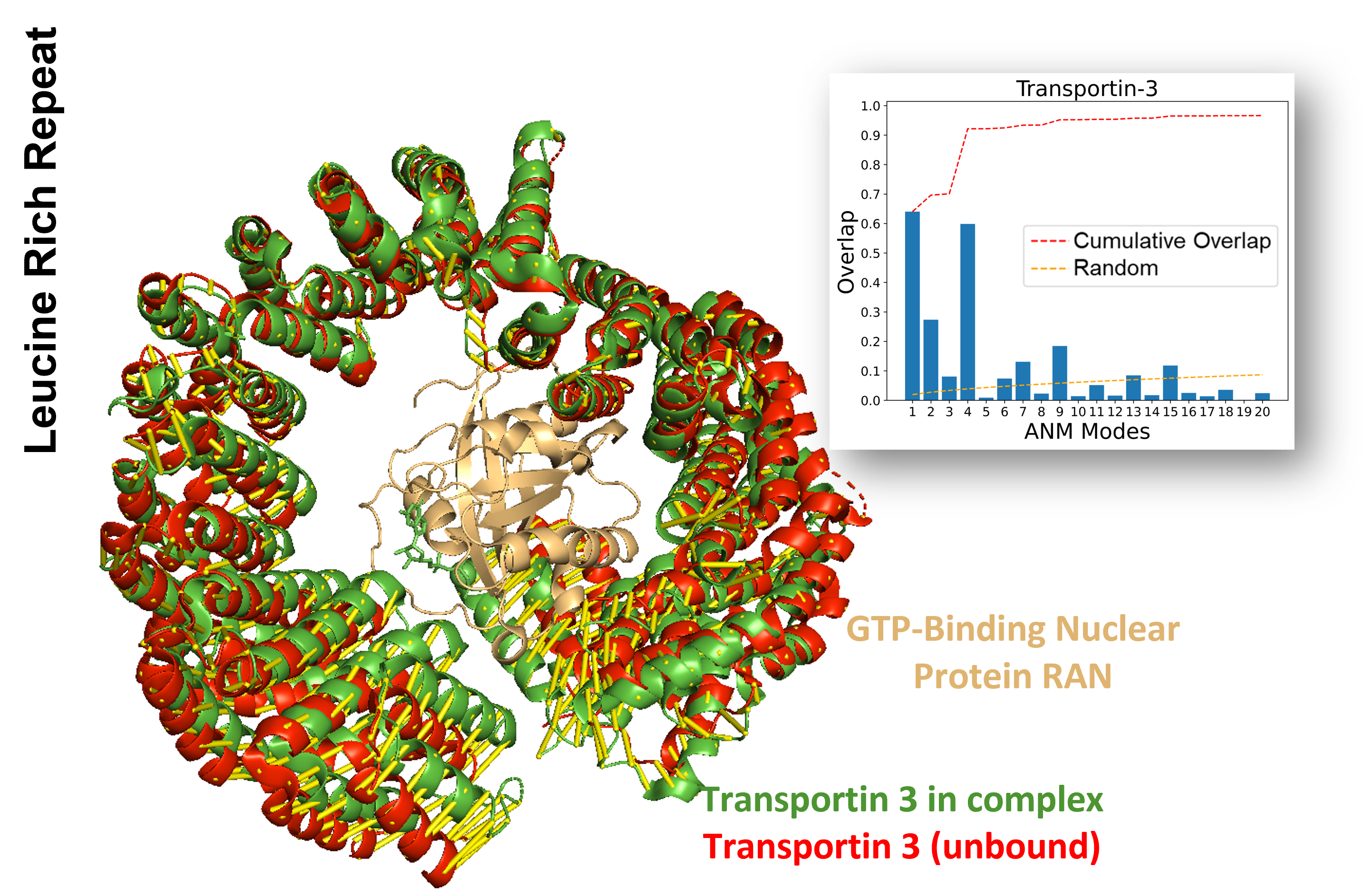Nuclear Transport
Nuclear transport receptors utilize their softest modes of motion to interact with RAN and recognize NLS in cargo proteins. Transportin 1 (TNPO1) and Transportin 3 (TNPO3) are importin-β family members that play pivotal roles as nuclear import receptors. They bind specific NLS on cargo proteins, enabling their transport into the nucleus. The interaction with RAN regulates cargo release upon reaching the nucleus. This interaction contributes to essential cellular processes, including gene expression and cell signaling1.
TNPO3's toroidal shape with 20 HEAT repeats, undergoes a notable transition from unbound to RAN-bound form, driven by the first four ANM modes.
TNPO1's, also with 20 HEAT repeats exhibit intrinsic flexibility, allowing it to adapt its shape for binding various cargo proteins. The transition from unbound to RAN-bound forms of TNPO1 shows a significant change and is highly correlated with ANM modes, particularly the second mode.
Importin subunit alpha-3 (IMA3)2 interacts with the transcription factor SOX-2. IMA3's three domains play essential roles, with its 10 ARM repeats aiding cargo protein binding. The transition from unbound to cargo-bound forms of IMA3 is facilitated by the first three ANM modes.
These analyses offer insights into nuclear transport receptor dynamics and their interactions with cargo and RAN during nucleocytoplasmic transport.
References
1Terry, L. J.; Shows, E. B.; Wente, S. R., Crossing the nuclear envelope: hierarchical regulation of nucleocytoplasmic transport. Science 2007, 318 (5855), 1412-6.
2Tsimbalyuk, S.; Donnelly, C. M.; Forwood, J. K., Structural characterization of human importin alpha 7 in its cargo-free form at 2.5 Å resolution. Sci Rep 2022, 12 (1), 315.


